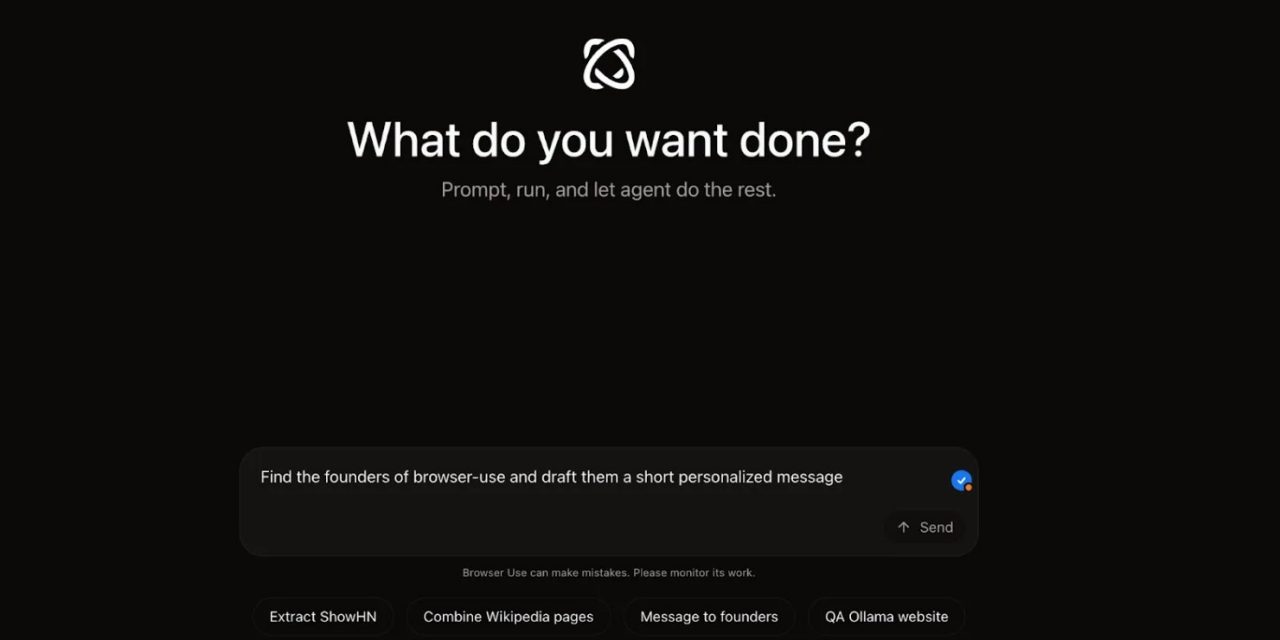When Magnus Müller first demonstrated Browser Use’s prototype to a room of skeptical developers in Zurich last year, even he couldn’t predict how rapidly his tool would redefine the boundaries of AI automation. As the startup announces its $17 million seed funding round led by Felicis Ventures, the tech world is waking up to a fundamental truth: the way AI interacts with the web is about to change forever.
Browser Use’s emergence comes at a pivotal moment in artificial intelligence development. While large language models like GPT-4 dazzle with their conversational abilities, a critical limitation persists—most AI systems still struggle to reliably navigate the messy, ever-changing landscape of websites. Traditional approaches relying on computer vision (interpreting screenshots) or brittle DOM tree parsing (analyzing website code structures) frequently fail when buttons move, layouts shift, or content dynamically updates. The result? Broken workflows, frustrated developers, and automation costs that spiral as engineers constantly tweak their systems.
This is where Browser Use’s technical innovation shines. By translating websites into a standardized “text-like” representation of interactive elements, the startup effectively creates a universal translator for AI agents. Imagine converting the visual chaos of a modern webpage – with its nested menus, pop-up modals, and AJAX-loaded content – into something resembling a well-organized textbook chapter. That’s the paradigm shift Browser Use enables.
From Academic Project to Industry Standard
The origin story reads like classic startup lore. Müller, a veteran of web scraping tools, crossed paths with Gregor Žunič during their data science master’s program at ETH Zurich. Their late-night coding sessions at the university’s Student Project House accelerator birthed a prototype in just five weeks. But what truly set Browser Use apart was their decision to open-source the core technology early.
“We wanted to prove this wasn’t just another wrapper around existing libraries,” Müller explained during our video call, gesturing at a live demo of their system parsing a complex SaaS dashboard. “By letting developers see under the hood, we created advocates who started embedding our tools into their own agent frameworks.”
The numbers speak volumes. Over 20 companies in Y Combinator’s current Winter 2025 batch have integrated Browser Use into their AI products. Chinese startup Butterfly Effect’s viral Manus tool – which automates multi-step workflows across platforms like Shopify and WhatsApp – attributes much of its reliability to Browser Use’s standardization layer.
Beyond Pixels and XPaths
To understand why this matters, consider how most AI agents currently interact with websites. Vision-based systems (like those using GPT-4V) treat the browser as a series of images, requiring expensive GPU resources to “see” and interpret elements. Code-based approaches rely on XPath selectors—fragile addresses pointing to specific elements in a webpage’s code structure. Both methods crumble when designers rearrange layouts or developers alter class names.
Browser Use’s solution is elegantly counterintuitive. Instead of trying to map the visual or structural representation of a site, their engine analyzes the functional purpose of each interactive element. A button isn’t just a <div> with specific CSS classes—it’s a “submit action for contact form” or a “product filter toggle.” This semantic understanding allows agents to adapt to cosmetic changes as long as the underlying functionality remains consistent.
During a technical deep dive, Müller walked me through their architecture:
- Element Classification: Machine learning models trained on millions of web components categorize each interactive element (button, form field, etc.)
- Intent Mapping: Natural language processing links elements to probable user intents (“search,” “purchase,” “filter results”)
- Contextual Chaining: Relationships between elements are mapped to guide agents through multi-step workflows
The result? Agents that can navigate even frequently changing sites like LinkedIn with 92% fewer errors compared to traditional methods, according to internal benchmarks.
Market Implications: The Infrastructure Play
Astasia Myers of Felicis, who led the funding round, sees Browser Use as foundational infrastructure: “Just as Stripe abstracted payment processing complexity, Browser Use is becoming the abstraction layer for web automation. Their open-source approach creates network effects – every developer improving the core models benefits the entire ecosystem.”
This strategic positioning becomes clearer when examining adoption patterns. Enterprise users aren’t just leveraging Browser Use for internal automation; forward-thinking companies are proactively optimizing their websites for better agent compatibility. As Müller noted, “We’re seeing companies ask, ‘How can we structure our checkout flow to be more agent-friendly?’ It’s reminiscent of early SEO practices.”
The financial potential in the AI automation sector is substantial. According to MarketsandMarkets, this industry is projected to grow significantly from $6.9 billion in 2024 to $26.9 billion by 2029. Browser Use’s flexible pricing model—combining open-source options with enterprise licenses—positions the company to effectively capture value across this growing market. Early customers have already reported a compelling ROI, highlighting reductions of 60-70% in automation maintenance costs, a significant advantage for businesses aiming to scale their AI workflows.
Ethical Frontiers: Balancing Automation and Accessibility
No discussion of web automation exists in an ethical vacuum. Browser Use’s technology raises legitimate concerns:
- Access Control: How do websites prevent unwanted automation? Müller emphasizes collaboration: “We’re working with W3C groups on robot.txt standards for the agent era.”
- Data Privacy: The system’s ability to parse protected content necessitates strict governance. Browser Use maintains they only process publicly accessible data.
- Labor Impact: While automating repetitive tasks, the tech could disrupt certain clerical jobs. However, Myers argues, “These tools will elevate human work to higher-value creative problem solving.”
Standardizing the Semantic Web
Looking forward, Browser Use’s greatest impact may be in shaping how websites are built. Just as mobile responsiveness became mandatory, we might see “agent-friendly design” emerge as a new web standard. W3C members I spoke with confirm early discussions about formalizing semantic markup conventions for AI interoperability.
For developers, the implications are profound. As Žunič noted, “We’re entering an era where every web service needs to consider both human and AI users in their UX design. It’s not about replacing humans—it’s about creating symbiotic workflows where agents handle the predictable, freeing people for the extraordinary.”
More Than a Tool, a New Lens
Browser Use’s $17 million validation isn’t just about funding—it’s industry recognition
that AI’s next leap requires reimagining its interface with the digital world. As I reflect on Müller’s demo – watching an agent seamlessly adjust hotel bookings across three different portal designs – I’m reminded of Tim Berners-Lee’s original vision for a “semantic web.” Decades later, through the lens of modern AI, that vision might finally materialize.
The companies that thrive in this new paradigm won’t be those fighting against automation but those embracing Browser Use’s central insight: In an age of artificial intelligence, the most valuable interfaces are those that speak clearly to both humans and machines.
Image Credits: Browser Use (screenshot)





